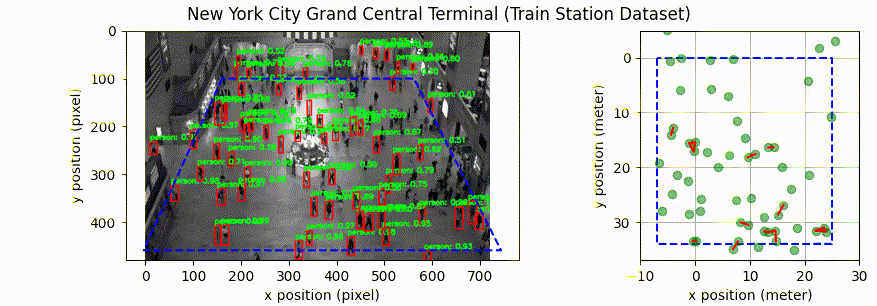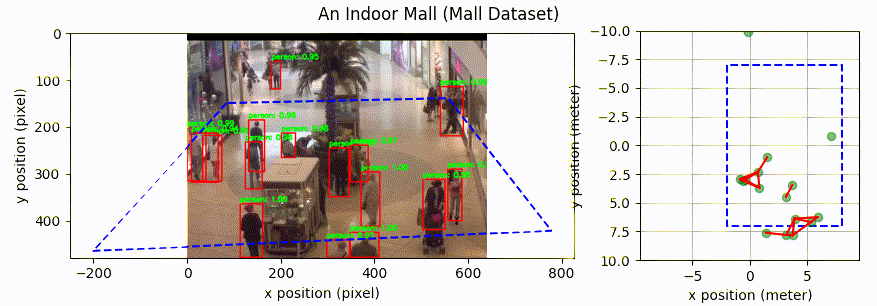A Vision-based Social Distancing and Critical Density Detection System for COVID-19
Developed by Dongfang Yang and Ekim Yurtsever at Control and Intelligent Transportation Research (CITR) Lab, The Ohio State University.
Paper: arXiv preprint
Updata Log:
- 2020.09.15: We have added the instructions for running the pedestrian detection and the data analysis. Please see the section of 'Getting Started'.
- 2020.07.10: We are still in the process of finalizing the repository. The complete version will be released soon!
Our system is real-time and does not record data. An audio-visual cue is emitted each time an individual breach of social distancing is detected. We also make a novel contribution by defining a critical social density value for measuring overcrowding. Entrance into the region-of-interest can be modulated with this value.
Illustration of pedestrian detection and social distancing monitoring.
NYC Grand Central terminal: We found the floor plan of the building and calibrated the camera by picking landmarks. We provide the transformation matrix in
calibration/grand_central_matrix_cam2world.txt
Oxford town center: The original dataset provides the transformation matrix. We added it here also calibration/oxford_town_matrix_cam2world.txt
Mall: We could not found the transformation matrix or the floor plan of this dataset. Instead, we first estimated the size of a reference object in the image by comparing it with the width of detected pedestrians and then utilized the key points of the reference object to calculate the perspective transformation. We provide this transformation matrix in calibration/mall_matrix_cam2world.txt
Keeping the social density under the critical value will keep the probability of social distancing violation occurrence near zero with the linear regression assumption.
The program was developed based on python 3.7 with pytorch 1.5.
We highly recommend to use conda. After you have created a new conda environment, use the following command to install pytorch:
conda install pytorch==1.5.0 torchvision==0.6.0 cudatoolkit=10.1 -c pytorchYou may also need to install the packages specified in requirements.txt file if you don't have them.
We provide an alternative link for you to download all the datasets: https://drive.google.com/file/d/1G6nZS-EZLrNBC68CRDf-yo2uj3k32j35/view?usp=sharing
Then copy all the files into folder datasets in the repository.
Execute detect.py to obtain the detection result. The result will be saved at folder results in the repository. Result will be saved as pickle .p file for each dataset.
Execute analyze.py to obtain the analysis result. It will be saved in the same folder results.
- Social distancing monitoring pipeline
- Evaluation on different pedestrian crowd datasets
- Detector: Faster R-CNN
- Detector: Yolo v4
- Detector: EfficientDet
- Critical density analysis
- Embedded system integration
- Camera calibration UI
For further info please contact:
- Dongfang Yang: yang.3455@osu.edu
- Ekim Yurtsever: yurtsever.2@osu.edu





